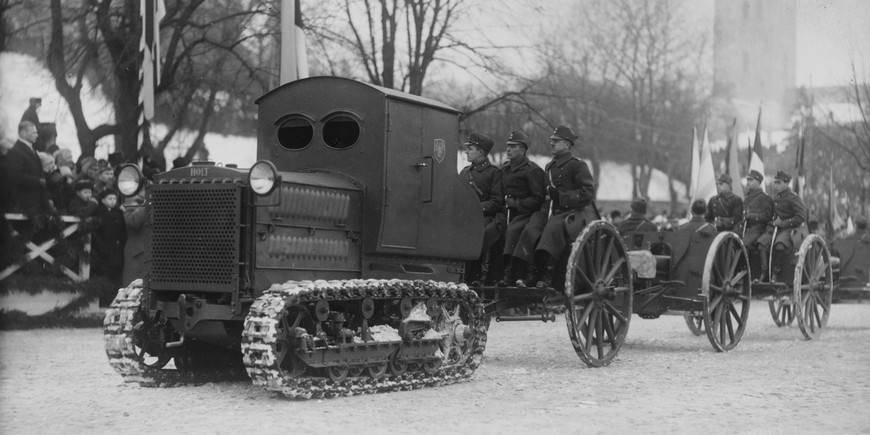The Birth of the Republic
Quickly put, the “Manifesto to the Peoples of Estonia” was written by the Estonian Salvation Committee and Estonia was declared an independent republic on February 24, 1918. This did not happen overnight, however.In the 19th century, Estonians began to study the local language and founded consciousness-raising societies, leading to the spread of literacy throughout the region and the printing of Estonian language publications. In the second half of the century, the National Awakening begun, raising a national consciousness among Estonians. The first song festival, a tradition still carried out today, was held in Tartu in 1869 and represented the first demonstration of Estonian national identity. Tsar Alexander III stifled this when he came to the throne in 1881, initiating a period of intense Russification.
After February Revolution of the Russian Empire, the Estonian people sought administrative unification of their historic area of settlement, which led to the unification of the Estonian Province with the northern part of the Livonian Province on April 12, 1917. This covers most of the area that is now called Estonia.
Taking advantage of the instability in Russia, the democratically-elected Estonian Provincial Assembly convened on July 14, 1917 and on November 28, 1917, declared itself the highest power in Estonia.
Estonia takes advantage of the chaos in Russia caused by WWI and the Bolshevik Revolution, declaring independence on February 24, 1918.
The Council of Elders of the Provincial Assembly formed by the Estonian Salvation Committee granted itself all administrative power in Estonia on February 19, 1918 until a normal state of affairs was reached. Keep in mind, this was just before WWI as the Red Army was leaving Estonia and the Germans were moving in. The Manifesto mentioned above was drafted and publicly declared on February 23, 1918 in Pärnu.
The Germans arrived the next day and it was only after the end of WWI that Estonia was truly free of occupation. In the meantime, the Estonian Defence League (Kaitseliit) and the ministries were formed on November 11, 1918. On November 28, 1918, the Estonian War of Independence began near Narva. The War lasted 13 months until February 2, 1920, when the Tartu Peace Treaty was signed. At the time, Soviet Russia renounced claims to the territory “for all time”. The Estonian Parliament was born on April 23, 1919. In October of 1919, the historic Land Law was passed, giving Estonians the right to own land and on December 1, the University of Tartu opened its doors with degrees taught in Estonian.
In 1921, the Republic of Estonia was accepted into the League of Nations. Reforms progressed quickly and social welfare laws were on a par with those in Europe. A political crisis in the mid-1930s brought the young republic to the verge of authoritarianism. President Konstantin Päts banned political parties and restricted civil rights, but maintained popular support.
Independence would not last long. On August 23, 1939, the USSR and Germany signed the Molotov-Ribbentrop pact, in which secret protocols carved Eastern Europe into spheres of influence. On June 16, 1940, the USSR accused the Baltic states of aggression and demanded the right to occupy them. ‘Elections’ took place July 14 - 15, with Soviet-approved candidates. The phoney parliament applied for admittance to the USSR, which was granted on August 6. WWII continued to rage across Europe and by the end of 1941, the Nazis won Estonia from the Soviets. The German occupation lasted three years. Soviet forces begin air attacks on March 15, 1942, and caused serious damage in the infamous attack of March 9, 1944. By September, the Germans had fled. Estonia was declared a Republic again on September 18, but Soviet forces reached Tallinn four days later. From 1944 to 1991, Estonia fell under Soviet Occupation.
From April 2017 to February 2020, 100 years will have passed since the events leading up to and after the birth of the Republic. Estonia100 aims to celebrate these anniversaries and especially Estonia’s future. While the celebrations have already begun, the centenary will be observed on February 24, 2018. Look at our Events section and Independence Day feature to find out how you can join in.





Comments